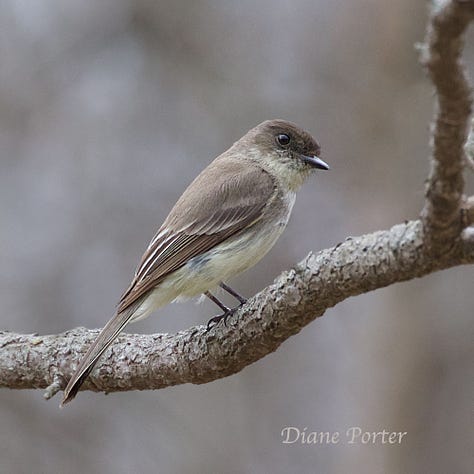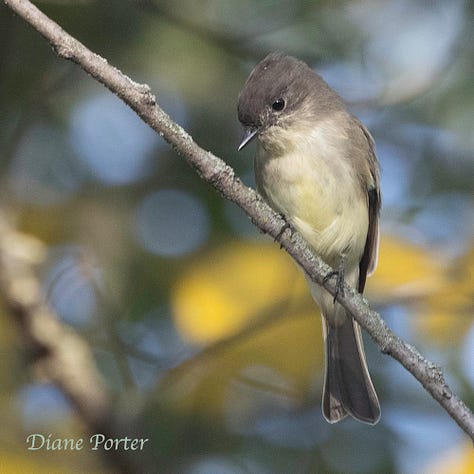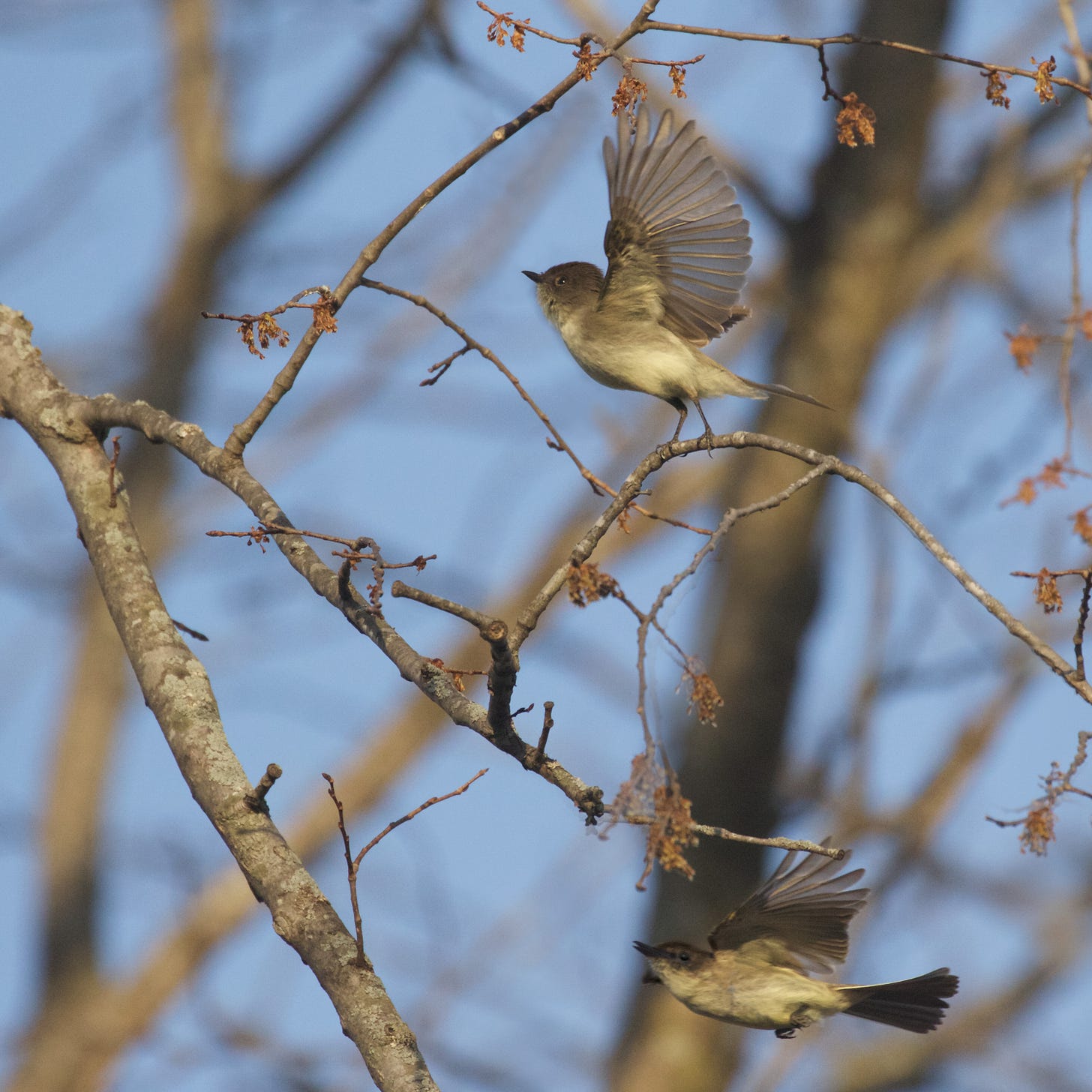Eastern Phoebe in Spring
The first flycatcher of spring has arrived in my backyard. Before I see it, I hear it sing...
Eastern Phoebe is always the first flycatcher to return to my backyard in late winter. It gets here in southeast Iowa by mid March, way before most other small migrating birds.
I find the first phoebe of the year by its song. Phoebes sing their own name.
The pitch goes up. Phoe-bee?
Then the pitch goes down. Phoe-bee!
Repeat, repeat, repeat.
Some of the notes have a purring quality.
After I hear the phoebe, then I see it.
But there’s no flies yet!
Like other flycatchers, Eastern Phoebe eats flying insects. Of course, most insects are still dormant and aren’t flying yet.
So what does the phoebe eat in Iowa in March?
It gets by on small fruits and the occasional insect or tick. That food flexibility lets the phoebe migrate north sooner and get an early start in breeding.
To find a phoebe
Look for Eastern Phoebes near a bridge. They always nest under shelter, because their mud-and-moss nest would dissolve in rain. So the under-structure of a bridge is perfect for them. They also nest on rafters in open garages and under the roof of covered porches.
If you're driving along a country road this spring, stop and get out of the car at any little bridge. Listen and watch for a gray bird. It's likely to be perched fairly low in the trees that grow along the stream. Or it may fly out from under the bridge and land on a root dangling near the bank.



How to know the phoebe
The bill is black. The top of the head is darker than the bird’s back. It bobs its long, loosely-hung tail up and down, almost as if trying to keep its balance. To me, the bird has a wide-eyed, gentle expression.
If in doubt, let your ears identify the flycatcher that sings its name.
Phoe-bee!





I live on an acreage with a creek, a phoebe always nests in the bridge. There are many trees nearby for it to roost in when leaving the rectangular concrete tunnel of a "bridge."
http://survision-bigsur.blogspot.com/2020/01/black-phoebe.html?m=1